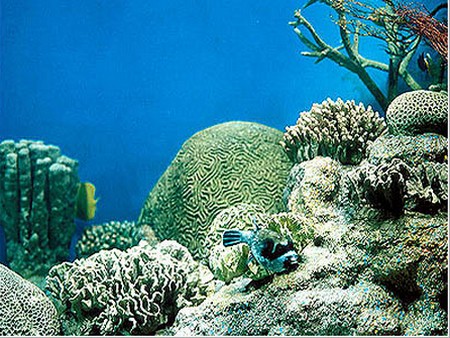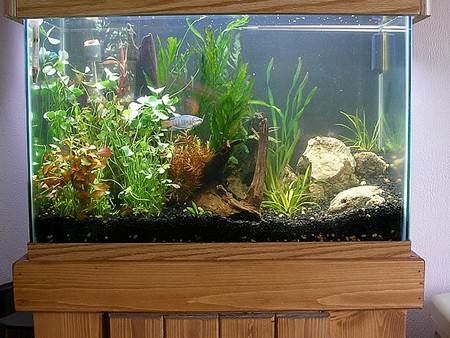Fish, like people, do not always manage to live in harmony. In the restricted conditions of an aquarium, territorial and aggressive behaviour may be more pronounced; it is vital to do your homework before setting up your aquarium so that you choose fish that will live peaceably together.
The community aquarium
Thoughtful planning is vital to the successful establishment of a community aquarium. As well as working out how many fish the aquarium can safely accommodate, you must also consider which levels the fish will occupy, so as to avoid overcrowding. Check on their likely adult size, because they may grow considerably after purchase.
You can help to decrease levels of aggression among the aquarium occupants by making sure there is enough cover in the form of plants and rocks. This provides hiding places for young guppies, for example, out of sight of their rapacious elders who might otherwise eat them. Some fish use cover as a means of establishing territorial boundaries. In an open aquarium, with no vegetation, conflict is far more likely to arise, and although continual chasing may not directly harm weaker individuals, it does cause stress and so makes fish more vulnerable to fungus or other infections.
Predatory fish, such as piranhas (here, the red piranha, Serrasalmus nattered), can cause injuries with their sharp teeth, hut remember it is not always easy to identify less obvious aggressors in a community aquarium.
Small angelfish (Pterophyllum species) are often recommended for a community aquarium, but their trailing fins make them vulnerable to attacks by fin-nipping species such as zebra danios (Brachydanio rerio). Damaged fins may become infected, and the angelfish may die. If they survive and grow, however, then the tables are turned, and the larger angelfish may persecute their smaller tormentors.
The breeding period
Aggressive behaviour is often most apparent when the fish are in breeding condition, because they may turn more territorial at this time. An indication is the dominant male becoming more brightly coloured than his companions , and persistently swimming after weaker individuals and females. Their aggression is likely to focus on other members of the same species, but fish of a similar colour may also be harassed.
In these circumstances, you need to separate the fish, transferring the male and several females to breeding accommodation. Rather than setting up a separate aquarium, you may be able to use a tank divider for this purpose, keeping the male on his own if you do not want the fish to breed. Usually, you can remove the barrier after his level of aggression has declined; individual fish vary significantly in this respect, with some being much more troublesome than others.
With a few species, notably the Siamese fighting fish (Betta splendens), males must never be housed together. They are so aggressive that they will fight to the death, although they will live in harmony with other species.
The traffic light system
Before buying fish, always try to discover as much as possible about their sociability and behaviour. Some aquatic shops operate a guide known as the traffic light system. Fish marked with a green dot after their name are generally suitable for a community aquarium whereas those marked with orange may give rise to problems. Fish indicated by red dots are usually aggressive or have other particular requirements, such as preferring brackish water, which makes them unsuitable for the typical community aquarium.

Cautious introductions
Once established in an aquarium, fish establish their own territories and members of a group tend to resent new fish of the same species, even if they are compatible in other circumstances. The resulting harassment can lead to the rapid demise of the newcomers.
This problem may be especially apparent when you first set up your aquarium. Until the filter bed has matured and is fully functional, it is best not to use the tank’s maximum stocking density.
Rather than buying a few fish of each species and adding more later, it is often better to start with just one species and then add examples of another in due course. This is less likely to cause conflict, because members of each species can establish themselves as a separate group, without the newcomers having to settle into the existing hierarchy of their own species.
